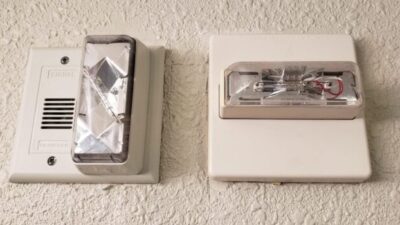This April, the Minneapolis Convention Center opened the doors on a seamless expansion that adds 200,000 sq. ft. of exhibition space, 33 more meeting rooms and a 3,400-seat plenary hall. With a total size of approximately 1,500,000 sq. ft., the center's usable space has nearly been doubled. Naturally, managment insisted that a state-of-the-art fire-protection system be part of such an ambitious...
This April, the Minneapolis Convention Center opened the doors on a seamless expansion that adds 200,000 sq. ft. of exhibition space, 33 more meeting rooms and a 3,400-seat plenary hall. With a total size of approximately 1,500,000 sq. ft., the center’s usable space has nearly been doubled. Naturally, managment insisted that a state-of-the-art fire-protection system be part of such an ambitious expansion plan.
Except for its low-voltage communication wiring, the facility’s original zoned fire-alarm system was completely scrapped. Officials looked for a system that was sophisticated, yet user friendly, and one that would discourage human error, but which could still be operated with ease and speed.
In searching for a new system, the facility’s managers also made reliability one of their main concerns. The facility team selected a multiplexed, distributed-intelligence fire-detection system. Teamed with addressable, application-specific smoke detectors whose environmental settings make them highly resistant to false alarming, the system is composed of 13 panels networked peer-to-peer. Twelve panels control all of the building’s smoke detectors, including alarm verification, sequencing and point-by-point identification. The last panel controls a deluge system for a below-grade exhibition hall. Also, the overall fire-protection system includes a smoke-control system for the four-story atrium, elevator release, damper switches, strobe power and graphics system.
As to the question of reliability, if the system gives a specific alarm, operators and management can be sure that the event is actually happening. And if there is no alarm, they can be confident that nothing is happening.
Breeding confidence
Since the installation of the original fire-alarm system in 1989, while there had never been a real fire emergency, there was a continuing series of false alarms. Because the old system depended on manual verification, all the alarms could be checked out by operators and discounted. As a result, excessive false alarming kept building operators in a high state of stress, but never got through to annoy or disrupt the public.
Under present codes, however, false alarms would be very disruptive. Strobes and horns go off, and voice-evacuation announcements are made. The first floor of the expanded convention center measures three blocks by a block and a half, which on a normal day, will be occupied by thousands of people. Their needless evacuation into a harsh Minnesota winter would be intolerable.
Consequently, the new system, which is self-diagnosing, is designed to prevent such an occurrence. If a problem develops that might lead to a malfunction or false alarm, operators are alerted well ahead of time, and proactive measures can then be taken to resolve the situation.
As a last resort, the positive alarm sequence allows three minutes for human intervention before initiating automatic warning and other actions. If the signal is not confirmed as a false alarm within three minutes, automatic fire-safety responses begin, including strobe lights and voice-evacuation instructions through the personnel paging and public address systems.
Firefighter friendly
Another major goal of facility managers was to make the system firefighter friendly. Specifically, a central alarm station (CAS) was designed to serve as a command center for the fire department. A touch-screen color graphics system displays floor plans for every part of the convention center, with several close-up magnitudes available. A fire commander can see at once what’s going on—and where fire equipment, flammable storage and security doors are located in relation to the fire. In general operation, an alarm activates an audio annunciator in the CAS, and the graphics system exhibits a screen narrative describing the problem and listing properly sequenced responses.
The new system was already functional inside the existing building when the expansion project began, which allowed management and operating personnel to learn the new system bit by bit as it was installed, avoiding the need to understand a completely new system all at once.
As for the remainder of the fire-protection scheme, smoke detectors are installed throughout the convention center in all public spaces, behind-the-house spaces, service areas and mechanical spaces—as well as in the HVAC ductwork. The facility’s exhibit halls have 65-ft. domes, and the ballroom has a high ceiling, so in these areas, infrared-beam detection supplements the ceiling-mounted smoke detectors.
When it comes to fire suppression, virtually the entire convention center is sprinklered, including public space, closets and even crawl spaces. In addition to being equipped with mandatory sprinklers, the below-grade exhibition hall also has a deluge system.
Prevention is better than reaction
Fire-safety management for the Minneapolis Convention Center concentrates on prevention rather than reaction. The goal is to stop any problems from occurring. In designing fire safety for the expanded convention center, management worked closely with the Minneapolis fire and inspections departments. Both these departments approved the initial concept, the proposed engineering and the initial submissions. They also oversaw installation, testing and inspection before giving their final approval.
In fact, the facility’s management continues to work closely with the fire department on a daily basis. For every convention, trade show, consumer show or any other activity at the center, the setup of the event must be approved by the manager and the fire department to ensure that it meets NFPA code.



